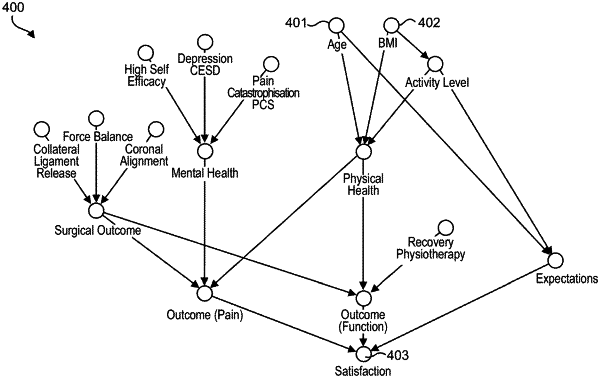| CPC G16H 10/20 (2018.01) [G06N 3/02 (2013.01); G06N 3/042 (2023.01); G06N 7/00 (2013.01); G16H 15/00 (2018.01); G16H 40/63 (2018.01); G16H 50/20 (2018.01)] | 26 Claims |

|
1. A method for managing patients of knee surgeries, the method comprising:
generating a pre-operative patient questionnaire user interface associated with a future knee operation of a patient;
receiving patient input data indicative of answers of a patient in relation to the pre-operative patient questionnaire, the patient input data being indicative of activity desires or patient behaviour;
performing a kinematic simulation by a simulator that simulates a result of the future knee operation to determine kinematic simulation data;
evaluating by a processor of a computer system a statistical model to determine a predicted satisfaction value indicative of satisfaction of the patient with the future knee operation, the statistical model comprising:
nodes stored on data memory representing the patient input data and the predicted satisfaction value and representing the kinematic simulation data and the patient input data indicative of activity desires or patient behaviour, and
edges stored on data memory between the nodes representing conditional dependencies between the patient input data and the predicted satisfaction value; and
generating an electronic document comprising a surgeon report associated with the future knee operation to indicate the predicted satisfaction value,
wherein each stored node is associated with a probability function that is configured to receive as an input of values for parent variables as defined by the stored edges, and is further configured to produce as an output a probability of a variable represented by that stored node.
|